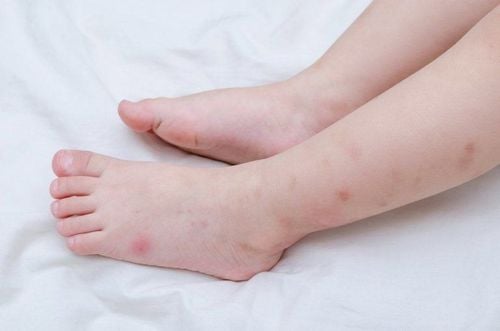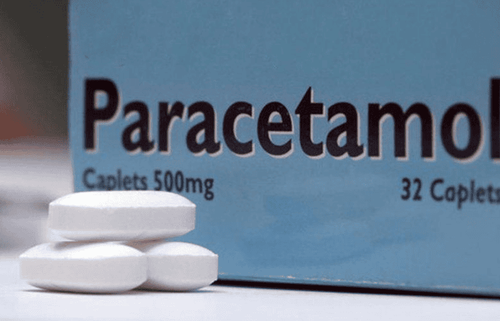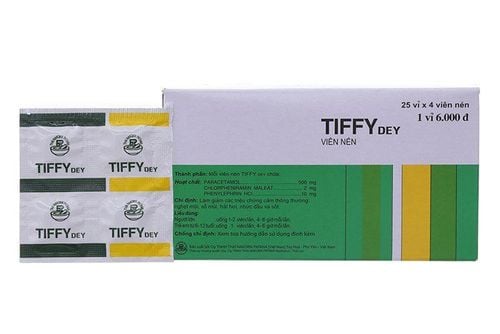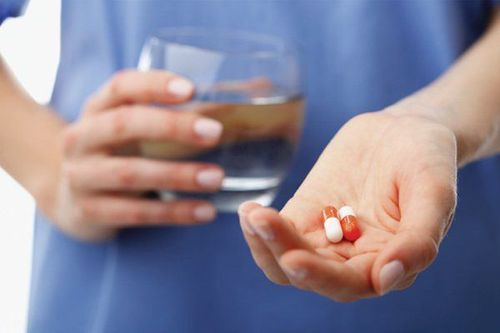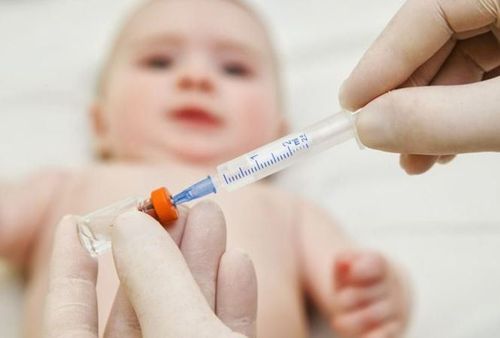This is an automatically translated article.
Typhus in young children is caused by the Herpes virus 6 or 7, which is manifested by fever and rash. Fever is the body's response to an infectious agent, causing the body temperature to rise. So when a child has typhus, when should they go to the doctor?1. Signs of typhus in children
Typhus in children is a condition in which a child's body temperature is higher than normal (fever) and small spots appear (rash). With proper rest and care, children with typhus will recover after 7-10 days and leave no complications. Signs of typhus in young children include:
Children have a high fever, possibly above 39 degrees Celsius with symptoms such as: sore throat, cough, runny nose. Fever usually manifests after 1-2 weeks from the time the child is sick and lasts from 3 to 5 days.
After a child has a fever, the rash appears as small spots or swelling. Usually the rash is pink or mottled, some of which are surrounded by a white ring. The rash spreads from the chest, back, abdomen to the neck and arms. They may disappear after a few days and are not itchy for the child.
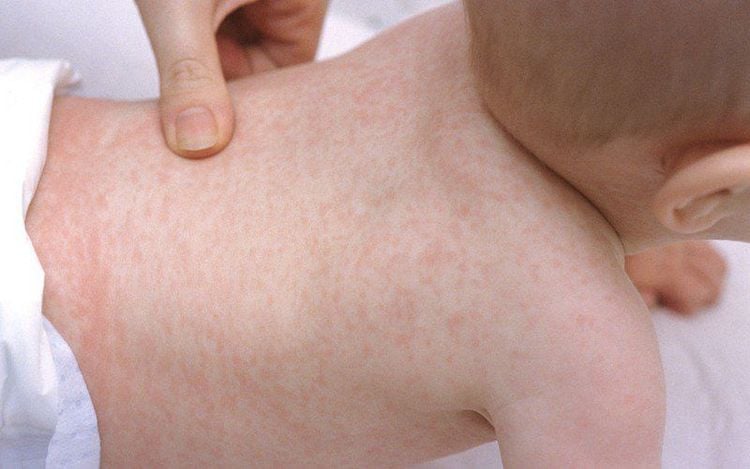
Sau khi trẻ bị sốt, các nốt ban xuất hiện giống như những đốm nhỏ hoặc sưng lên
Other symptoms: In addition to the two basic signs of fever and characteristic rash, typhus in young children can cause a number of other symptoms such as: swollen eyes, diarrhea, fatigue, loss of appetite, diarrhea nose....
2. When does a child with typhus need to see a doctor?
Typhus is caused by a virus, so it can go away on its own without antibiotic treatment. Fever is a sign that the body's immune system is fighting an infection, so in most cases, a child with a fever can be treated and monitored at home. However, parents need to pay attention to the child's behavior and body temperature to give the child fever-reducing medicine when necessary. The child is considered feverish when the thermometer shows:
Rectal temperature > 100.4oF (38oC) Oral temperature > 99.5oF (37.5oC) Axillary temperature > 99oF (37.2oC) Ear temperature > 100.4o ( 38oC) In case parents need to take their child to the doctor when having the following signs:
Typhus lasts more than 7 days. The rash does not improve after 3 days. Children under 3 months of age with fever above 38oC, even if they are not fussy, they still look good.
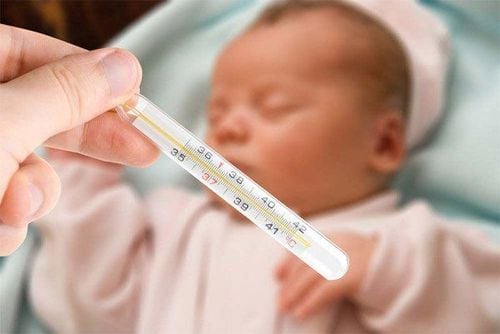
Cha mẹ cần đưa trẻ đi khám khi trẻ dưới 3 tháng tuổi sốt trên 38oC
Children over 3 months with fever above 38oC for more than 3 days. Or the child's appearance is not good: Crying, refusing to feed, irritability, fatigue. Children from 3 to 36 months with fever over 38.9oC or young children with fever over 40oC. Children with high fever convulsion. Failure to respond to antipyretics. Children with underlying diseases: heart disease, cancer, lupus, sickle cell... Children with fever and dehydration due to vomiting, diarrhea, Headache, rapid breathing.... The condition does not improve despite being examined or new symptoms appear. When a child has the above symptoms, parents need to quickly take the baby to the hospital to be examined by a specialist and have the most appropriate treatment.
3. Instructions for taking care of children with typhus at home
Reduce fever for children: When children have typhus fever, parents need to regularly monitor the child's body temperature, lower the temperature when necessary to make the child comfortable. Antipyretics are only used when the child has a fever of 38.5 degrees Celsius or higher and will stop when the symptoms are gone. An effective fever reducer for children is Acetaminophen or Ibuprofen. Acetaminophen can be used in each dose 4-6 hours apart, the dose is 10-15 mg/kg/time. If the temperature continues to be high and the child is over 6 months of age, Ibuprofen can be substituted or combined with Acetaminophen and used 6 hours apart, at a dose of 5–10 mg/kg orally every 6–8 hours. The dose of Acetaminophen or Ibuprofen should be calculated according to the child's weight, not age.
In case the child has a fever below 38.5 degrees Celsius, parents can reduce the child's fever by applying a cool compress: Loosen the child's clothes. Use a soft towel dipped in warm water to apply to the baby, each time for no more than 10 minutes/hour.
Rehydration for children with typhus Fever Children with fever lead to the risk of dehydration. To protect children's health, parents should let children drink plenty of water. With breastfed babies, need to increase the time of breastfeeding. For older children, parents can add milk, juice, filtered water, soup, powder... Children with fever may have anorexia, parents can divide mealtimes into small and unnecessary meals. force children.

Để bảo vệ sức khỏe cho trẻ, cha mẹ nên cho trẻ uống nhiều nước
Enhance rest for children Typhus is the cause of pain, fatigue and discomfort in children. During this time, parents should let the child rest. Do not force children to eat/sleep according to regulations. Only let children go to school or participate in other activities when the child's fever has subsided and his health is stable after 24 hours.
Young children aged 6 - 15 months are common victims of typhus due to their immature immune systems. The virus is easily spread from one child to another. Therefore, during the treatment of typhus in young children, parents should strengthen the child's resistance, limit contact with crowded places, and monitor physical manifestations to promptly take the child to a medical facility. medical examination if necessary.
Please dial HOTLINE for more information or register for an appointment HERE. Download MyVinmec app to make appointments faster and to manage your bookings easily.




